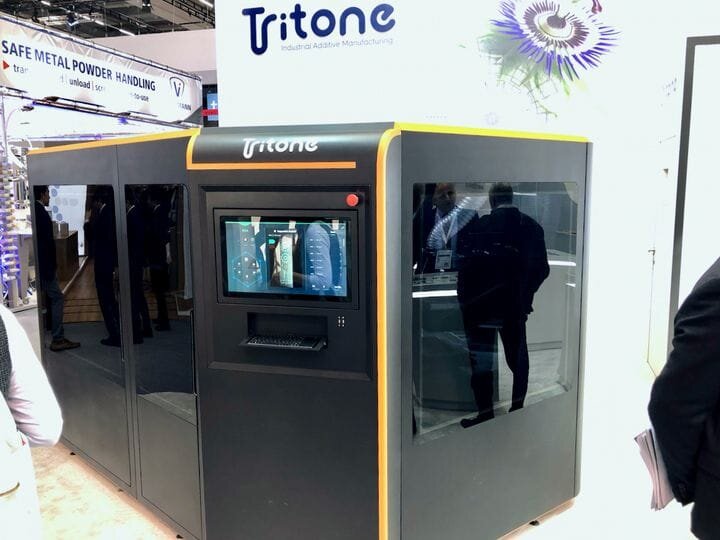![One of Tritone’s prototype 3D printers using MoldJet technology [Source: Fabbaloo]](https://fabbaloo.com/wp-content/uploads/2020/05/tritone-machine-1_img_5eb05091ab973.jpg)
We have an update on the progress of Tritone in their work to commercialize their MoldJet 3D printing process.
MoldJet 3D Printing
I first encountered Tritone at Formnext last fall where the Israeli company performed a conceptual launch of their unusual MoldJet technology. The concept is quite impressive as it allows for the use of inexpensive materials yet produces highly complex objects.
The key to MoldJet is the word “mold”. They are essentially 3D printing molds for objects that are made from standard MIM powders. However, the trick here is that they fill the 3D printed mold layer-by-layer with MIM powder. This allows them to achieve complex geometries.
![Sample part 3D printed on Tritone’s DOMINANT system [Source: Fabbaloo]](https://fabbaloo.com/wp-content/uploads/2020/05/image-asset_img_5eb05091e64dc.jpg)
There are a number of advantages in using MoldJet over other 3D printing processes, not the least of which is the ability to use standard MIM powders. These are commonly available everywhere at commodity price levels, and come in countless types of plastics and metals.
One interesting advantage I just realized was that parts produced using the MoldJet process require only a single post processing step, which is quite different from the more typical “green part / brown part” process. MoldJet does not require a debinding step because the nature of the MIM powder paste allows for thermal debinding at the same time as sintering.
MoldJet Commercialization
It’s one thing to invent a technology, and quite another to commercialize the technology. But that is in fact the stage Tritone finds themselves this year. From the information we’ve gathered, it seems that they have made considerable progress.
They now boast of 16 staff and a new location suitable for not only development, but also building production machines. Thus far it seems they have built at least one beta-test machine and are to install it in April at a friendly and nearby manufacturing operation that serves multiple markets, including aerospace.
MoldJet Print Quality
One of the key factors Tritone will have to ensure is the printed part quality. This question arises because of the initial uncertainty of whether a paste-based application of MIM powder would result in appropriately strong parts after sintering.
It would make no sense for manufacturing clients to purchase Tritone equipment only to find the output to be less than suitable for use. Therefore, Tritone has been spending considerable time producing test parts and certifying their engineering properties. I suspect they will focus their testing on various metals, as that type of material is of prime interest by manufacturers.
Tritone has not yet published the results of their analyses, but I get the impression their results are positive.
Tritone Outlook
Things seem to be going well for Tritone at this stage, as they prepare for a likely commercial launch of their DOMINANT device later this fall.
Via Tritone

